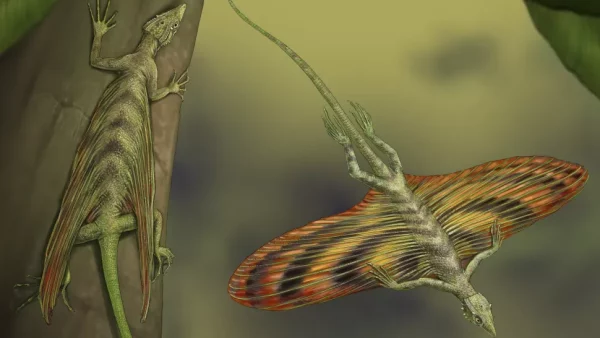
While most ancient reptiles crawled, scuttled and hopped through their prehistoric habitats, one stealthy creature opted for an airborne technique: gliding.
Tiny, “dragonlike” Coelurosauravus elivensis (see-luh-roh-SAW’-rah-vus eh-lih-VEN’-sis) used a pair of patagials — thin membranes that extended from its torso to its front limbs, forming a winglike structure to travel from treetop to treetop, according to a new study published online Friday (Sept. 9) in the Journal of Vertebrate Paleontology (opens in new tab).
Researchers from the French National Museum of Natural History in Paris are calling the critter “the world’s first gliding reptile,” according to a statement. Ever since the first fossils of the animal were discovered in 1907, paleontologists grappled with how this species — which measures roughly 4 inches (10 centimeters) in length, about the size of a human hand — evolved to glide through its forested habitat during the late Permian period (between 260 million and 252 million years ago). But now researchers think they have solved the mystery, using clues about the tree canopy in this unique reptile’s ancient ecosystem.
“Writer Fuel” is a series of cool real-world stories that might inspire your little writer heart. Check out our Writer Fuel page on the LimFic blog for more inspiration.

